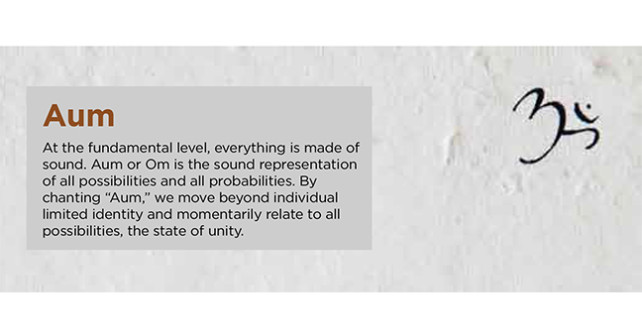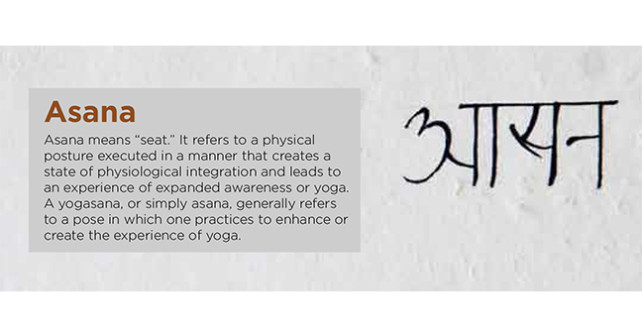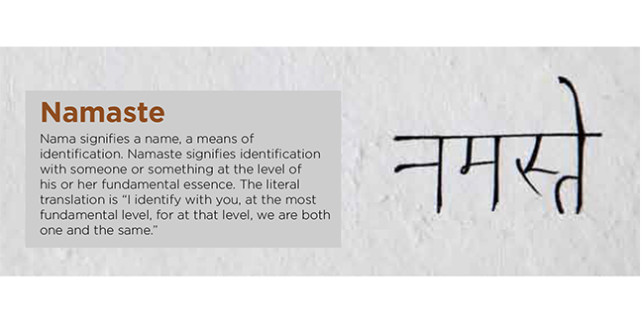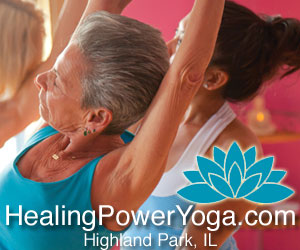Spelling out the fundamentals of Sanskrit
By Jim Kulackoski
From a young age, I was enchanted by two things: the universe and language. The universe appeared to be an infinitely diverse collection of matter and in constant change. Language was an equally diverse collection of seemingly arbitrary sounds acting as symbols (words) for specific objects, feelings and ideas.
I wanted to know how everything in the world around me worked and fit together. Along the way, I studied physical, biological and psychological sciences; learned how to play a few musical instruments; mastered several languages; and finally delved into spiritual disciplines, such as Catholic mysticism and yoga.
My fascination with language embraced both classical and modern languages. I began with Latin and Greek, then studied German, Russian and Italian, and even dabbled in Mandarin. Each language gave me a new and unique perspective of the shape of human consciousness; however, at some point, I became overwhelmed. How many disciplines or languages would I have to study to find what I was seeking?
My background in a simple practice of yogasana (yoga poses) eventually led me to the Vedic sciences and to Sanskrit, commonly known as a “cosmic” language. I finally began to answer my questions. Through an exploration of this infinitely diverse universe, the Vedic sciences clearly and concisely address the “how” and “why” of existence.
According to the Vedas (the texts in which this knowledge was recorded), the laws that govern nature become simpler the closer they get to a state of ultimate unity (Brahma). The Vedas offer methodologies, which not only explain these laws but also convey countless practical applications, such as medicine and health (ayurveda), for their understanding and realization.
The extensive body of knowledge that comprises the Vedas was originally passed down as an oral narrative and later transcribed. The language used in the oral and written transmissions of the Vedas was Vedic Sanskrit. Sanskrit has been referred to as a “perfect” language, free from the ambiguities and irregularities present in every other human language — ancient and modern. Sanskrit can convey complex ideas with accuracy and precision.
To my surprise, my studies in Sanskrit appeared to affect my own ability to think and act coherently and concisely. Through the simplicity of its sounds, its precise and orderly system of grammar and logical yet complex system of Sandhi (the rules for combining words), I found ways in which I could think and act more efficiently. Studying Sanskrit not only contributed to an understanding of the language itself, but also began to offer me glimpses deeper into the nature of reality. I found insights into nature and her processes I hadn’t noticed before. I began to observe orderliness and coherence in the world around me that reminded me of the structure of the Sanskrit language. Sanskrit seemed to mimic the way in which everything — including myself — occurs. I gained access to a point of view in which things no longer seemed to exist independently from each other. Instead, they began to appear to be unique expressions or variations of the same thing, and the purpose of the universe presented itself as the opportunity for a single conscious reality to know itself in every possible form.
According to the Vedas, as well as a number of quantum theorists, matter originates in sound. Matter itself could be thought of as a dense energy, whose most basic state is a vibration, a sound wave. This concept of sound as the primal cause of matter is called Shabdha or Shabdhabrahma in Sanskrit. It is the perimeters created by Shabdha, the sound wave itself, which define and create space (Akasha). It is space that provides the container and means for the rest of creation to occur.
From this point of view, everything from physical matter to thoughts and ideas are simply vibrations of sound. It is speculated in the Vedas that the particular “shape” of the sound vibration, which lies at the basis of any individual thing, is closely represented by the syllables of the Sanskrit word given for that object. Therefore, the sounds of Sanskrit seem to be an approximation of, or the human equivalent to, the actual sounds that comprise physical things within the universe.
This principle can be demonstrated by the Sanskrit syllable “Aum” or “Om.” This syllable is comprised of the three sounds, “A,” “U” and “M.” “A” is the simplest sound the human mechanism of speech can create, unshaped by the throat, mouth and tongue. It mimics the undifferentiated shape of silence and represents the state of unity. It represents the pure, undefined consciousness or awareness, which the Vedas state are the basis of the universe. The sound “M” is the opposite of “A,” being the full closure of the apparatus of speech and thus, creating a sound that mimics the full range of possible sounds. “U” represents the full range of iterations of sound that can occur between “A” and “M.” Therefore, Aum (amen, in English) or Om is the sound of all possible and probable forms in creation.
Each word, however complex its meaning, originates from the primordial sound “Aum.” In Sanskrit, the Aksharas (syllables that compose the alphabet) each contain a broad meaning, originating from the sound “Aum.” The syllables combine to become the roots of words, which further combine with other roots and syllables to form increasingly complex yet more specific ideas contained within each word.
This idea is outlined in a verse from the Vedas: “In the beginning there was Brahman (the Creator) with whom was Vak (the Word Aum); the Word (Aum) was Brahman, and from it issued forth all of creation (Krishna Yajur Veda, Kathaka Brahmana, XII:5).”
A similar idea exists within the Bible: “In the beginning, there was the Word, and the Word was with God, and the Word was God (John 1:1).”
As I continue to study Sanskrit, I am reminded often of the relationship of all things. I feel comforted by the idea of the orderliness of the reality I live in. I understand myself to be an inseparable part of a single living entity. I no longer see language as arbitrary, but as a powerful tool for both creation and evolution. My childhood questions are being answered.





























One Response to “Sanskrit: A child stargazer learns the ‘perfect’ language”
September 24, 2013
mia parkwhat a teaser article! i’m looking forward to reading more about the vedas in the magazine.